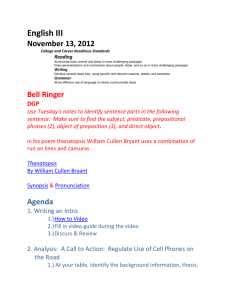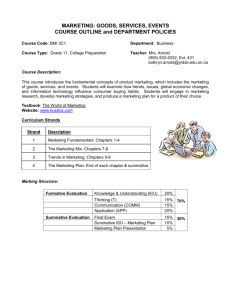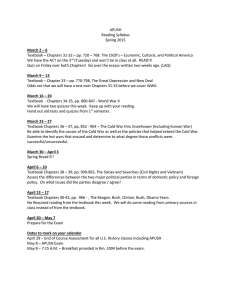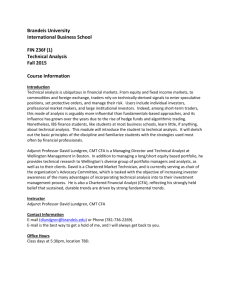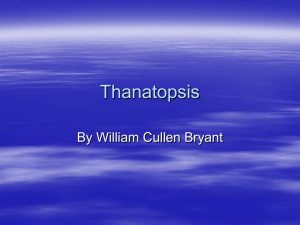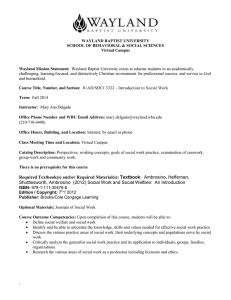AP Language and Composition
advertisement
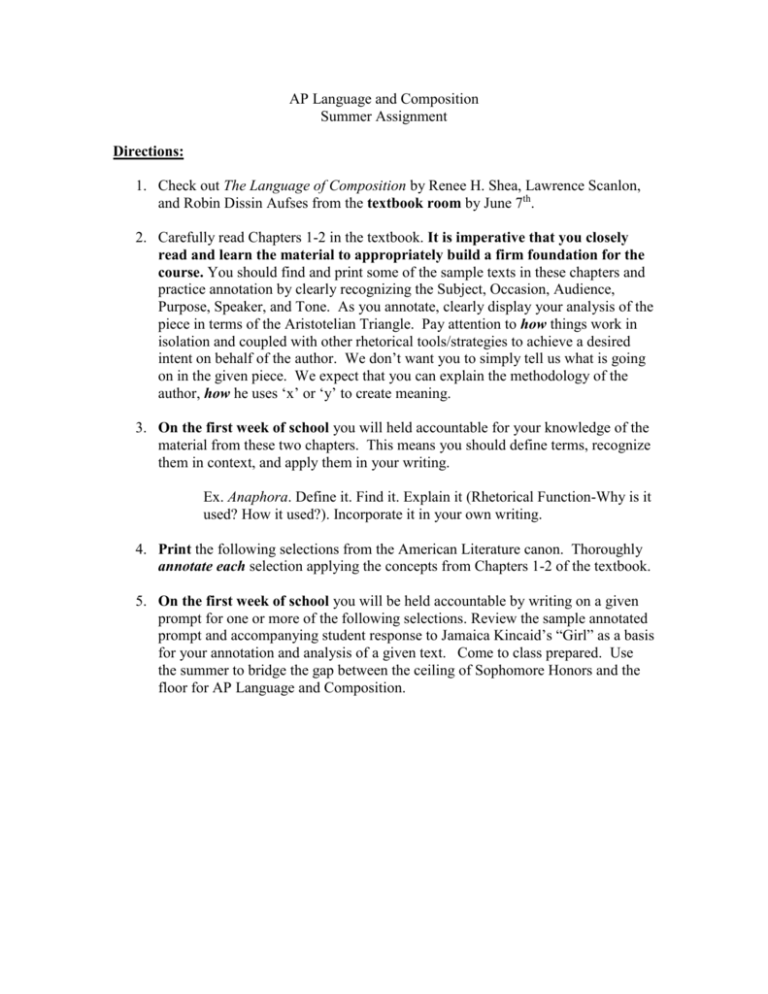
AP Language and Composition Summer Assignment Directions: 1. Check out The Language of Composition by Renee H. Shea, Lawrence Scanlon, and Robin Dissin Aufses from the textbook room by June 7th. 2. Carefully read Chapters 1-2 in the textbook. It is imperative that you closely read and learn the material to appropriately build a firm foundation for the course. You should find and print some of the sample texts in these chapters and practice annotation by clearly recognizing the Subject, Occasion, Audience, Purpose, Speaker, and Tone. As you annotate, clearly display your analysis of the piece in terms of the Aristotelian Triangle. Pay attention to how things work in isolation and coupled with other rhetorical tools/strategies to achieve a desired intent on behalf of the author. We don’t want you to simply tell us what is going on in the given piece. We expect that you can explain the methodology of the author, how he uses ‘x’ or ‘y’ to create meaning. 3. On the first week of school you will held accountable for your knowledge of the material from these two chapters. This means you should define terms, recognize them in context, and apply them in your writing. Ex. Anaphora. Define it. Find it. Explain it (Rhetorical Function-Why is it used? How it used?). Incorporate it in your own writing. 4. Print the following selections from the American Literature canon. Thoroughly annotate each selection applying the concepts from Chapters 1-2 of the textbook. 5. On the first week of school you will be held accountable by writing on a given prompt for one or more of the following selections. Review the sample annotated prompt and accompanying student response to Jamaica Kincaid’s “Girl” as a basis for your annotation and analysis of a given text. Come to class prepared. Use the summer to bridge the gap between the ceiling of Sophomore Honors and the floor for AP Language and Composition. Readings Puritanism 1) John Winthrop, “A Model of Christian Charity” http://religiousfreedom.lib.virginia.edu/sacred/charity.html 2) Anne Bradstreet, “Upon the Burning of Our House” http://www.puritansermons.com/poetry/anne13.htm Revolutionary 3) Patrick Henry, “Give Me Liberty or Give Me Death” http://www.law.ou.edu/ushistory/henry.shtml Romanticism 4) Nathaniel Hawthorne, “The Birthmark” http://www.online-literature.com/poe/125/ 5) William Cullen Bryant, “Thanatopsis” http://www.vcu.edu/engweb/webtexts/Bryant/thanatopsis.html Transcendentalism 6) Ralph Waldo Emerson, Chapter 1 of “Nature” http://www.emersoncentral.com/nature1.htm Realism 7) Frederick Douglass, “Fourth of July Speech” http://www.historyplace.com/speeches/douglass.htm 8) Mark Twain, “War Prayer” http://classiclit.about.com/library/bl-etexts/mtwain/bl-mtwain-war.htm Pre-Modern 9) Paul Laurence Dunbar, “We Wear the Mask” http://www.poets.org/viewmedia.php/prmMID/15888 Modern 10) Ernest Hemingway, “Hills Like White Elephants” http://www.asdk12.org/staff/grenier_tom/HOMEWORK/208194_Hills_Like_ White_Elephants.pdf 11) Gloria Anzaldua, “How to Tame a Wild Tongue” http://culturalidentity.qwriting.qc.cuny.edu/files/2011/08/9.8-ANZALDUAHow-to-Tame-a-Wild-Tongue1.pdf





